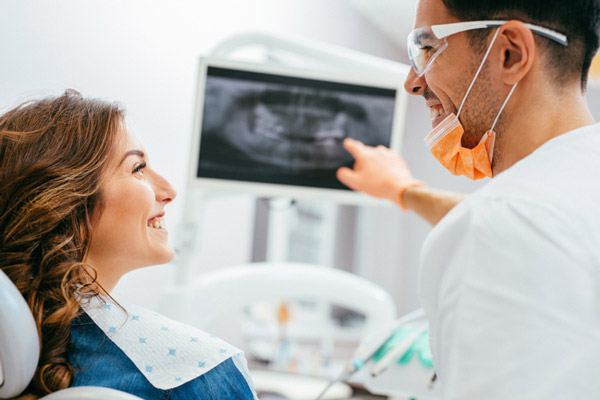Gum Grafting PlacentiaGum Grafting at Placentia Oral Surgery in Placentia, CA  Gum grafting surgery is a popular dental procedure for managing gum recession and thinning gums. This process helps to cover your exposed teeth roots and will add volume to the gum line. Gum grafting surgery is a popular dental procedure for managing gum recession and thinning gums. This process helps to cover your exposed teeth roots and will add volume to the gum line. Ideally, it helps enhance your oral health and facilitates the installation of other dental methods, such as implants. Grafting helps to minimize the risk of gum disease in the long run and ensures you have healthy gums. We offer professional gum grafting services at Placentia Oral Surgery. Gum Grafting in PlacentiaA gum graft is classified under dental surgery and is essential in managing gum recession, a condition where your gums tend to pull away from the teeth and expose the roots. When you have exposed teeth roots, you are at a higher risk of sensitivity, bone loss, and tooth decay. Grafting helps to replace the lost tissues surrounding your teeth. If you are considering gum grafting in Placentia, ensure that you visit us. We have a competent periodontist who will review your condition and advise you on the best treatment approach. There are various advantages of considering gum grafts, such as helping to enhance the appearance of your smile and restore an even gumline. We help address cosmetic concerns such as elongated teeth, exposed tooth roots, and uneven gum tissues. Remember that exposed teeth roots can cause discomfort in sensitive areas. Grafting will help to minimize discomfort. This treatment method also helps to halt the progression of gum disease or gum recession by covering your exposed roots and offering a protective barrier. This will help prevent further damage to your teeth and surrounding bones. Your exposed teeth roots are susceptible to tooth decay. Grafting will help protect your vulnerable areas and minimize the risk of cavities. What Is a Gum Graft?A gum graft can also be referred to as a gingival graft. There are different grafts that we can recommend for our patients. Connective tissue grafts are the most common that we use to manage root exposure. During this procedure, we cut a flap of skin from the roof of your mouth or palate, remove the connective tissues, and place them over the exposed root surface. We then suture the donor site. Free gingival grafts are other types of gum grafts. We take a small amount of tissue from your palate and place it directly on the recipient site. We can also opt for pedicle grafts, where a flap of tissue is partially extracted, leaving one edge attached. We then rotate the flap over the area that has gum recession. We can also use donated gum tissues rather than extracting tissue from your mouth. These grafts consist of sterilized and processed human tissues. Xenografts, on the other hand, use grafting material from animals. We process the tissue and remove any contaminants. Lastly, we can use autografts, which involve extracting tissues from different parts of your body and transplanting them into your gum tissues.  Who Could Benefit From a Gum Graft?A gum graft is recommended for individuals who have gum recession. This condition occurs for various reasons, such as periodontal disease or genetics. Even aggressive tooth brushing has been found to cause receding gums. The graft will help to cover the exposed root surfaces. Gum recession will also increase tooth sensitivity to cold or hot temperatures. The grafts will help to protect the exposed root surfaces and minimize sensitivity. Gum recession can result in teeth that appear longer or uneven gum lines. Grafting can also be performed for aesthetic concerns to help improve your appearance and create a pleasing smile. If gum recession is left untreated, it can cause other severe dental issues, such as tooth loss and root decay. Grafts help to prevent further damage by ensuring your exposed roots are well covered and offering a protective barrier. In other cases, undergoing orthodontic treatment can lead to gum recession. A graft is recommended to address gum recession and ensure your overall health is outstanding during and after orthodontic treatment. Certain medications or medical conditions may also contribute to gum recession. If you have uncontrolled diabetes or are taking medications, those can affect your gum health, and you will benefit from gum grafts to address such issues. Lastly, trauma to your mouth can injure your gums and cause your tissues to pull away from the teeth, leading to gum recession. In such a case, a gum graft is essential to repair such damaged tissues. Gum Grafting ProcedureThe process begins with scheduling a consultation with our periodontist. We examine your oral health and the extent of gum recession and advise on the available options for gum grafting. Before undergoing the procedure, we administer a local anesthetic to numb the area where we will place the graft. We prepare the grafts by extracting from your palate or readying the donated animal or human tissue. Next, we place the extracted tissues on the exposed tooth roots on your recipient site. We secure the graft by placing sutures or other securing techniques. The goal of the graft is to cover your exposed roots and promote proper healing and integration of the grafts with your existing gum tissues. We offer patients post-operative care instructions, such as managing their oral hygiene and the best diet to promote healing. Follow-up appointments are integral and help monitor your healing process, and we will remove the sutures if necessary. The healing time may differ, but you will experience improvement after a few weeks. Remember, after undergoing gum grafting, you can experience swelling, discomfort, or mild bleeding. We can recommend pain medications and ice packs to manage swelling and discomfort. You should follow a soft diet during the healing period and avoid any activity that can disrupt the graft site. If you are considering gum grafting, you must know the different gum grafts available. At Placentia Oral Surgery, we review the best type for you and ensure you have outstanding results. Schedule an AppointmentWe also walk with you through the entire process of gum grafting, from consultation to the surgical process to healing, recovery, and the follow-up process. If you have concerns, such as teeth sensitivity or gum recession, contact us today at (657) 216-1617. |
|
|